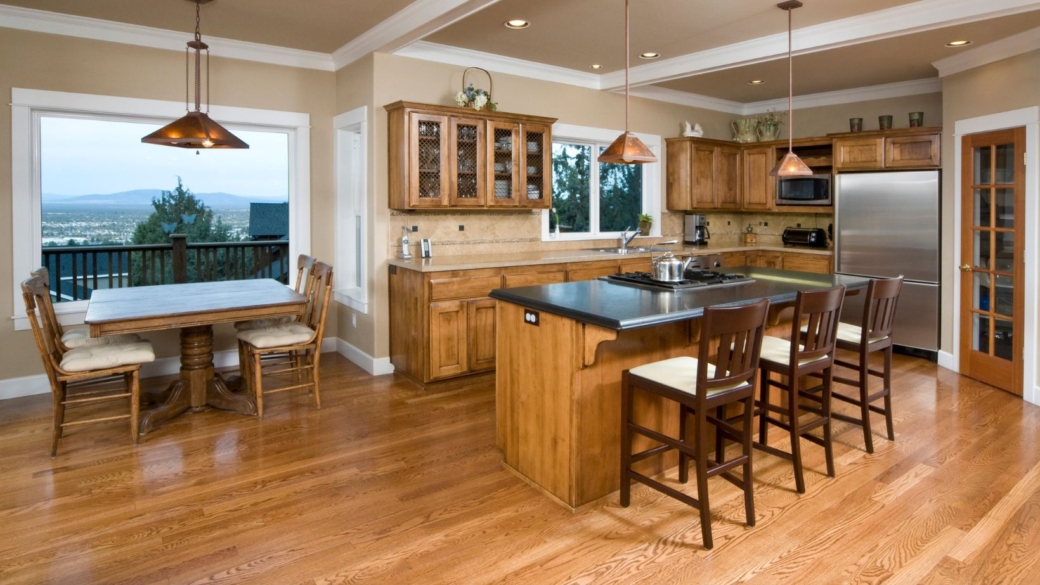When it comes to flooring, choosing the right wood color can transform your home, adding warmth, elegance, or a modern feel. The color of the wood you select can significantly impact the mood and aesthetic of your space, making it essential to understand the various tones, grains, and finishes available.
Natural Light Wood Colours
Light luxury flooring is an excellent option if you want to make a room feel open, airy, and larger than it is. These shades are often seen in modern and Scandinavian-style interiors. Light wood tones can reflect natural light, brightening any space and offering a clean, minimalist look. However, they are more likely to show dirt and stains.
Popular Light Wood Varieties
Maple: Known for its light, creamy color with minimal grain patterns, maple offers a smooth and sleek appearance that works well in contemporary spaces.
Ash: Ash has a pale, light blonde tone with pronounced grain patterns. Its durability and unique texture make it a popular choice for busy households.
Pine: Pine flooring has a lighter hue with knots and imperfections, giving it a rustic, lived-in feel that complements traditional and farmhouse designs.
Mid-Tone Woods
Mid-tone woods strike a balance between light and dark shades, providing versatility. They add warmth without making a room feel too dark or overwhelming. Mid-tones are suitable for a range of styles, from traditional to contemporary, and they create a welcoming, comfortable atmosphere.

They’re better at hiding dust and dirt, but that’s not to say they don’t require frequent cleaning. Some mid-tone options may yellow over time, too, especially in direct sunlight.
Popular Mid-Tone Wood Varieties
Oak: Oak flooring comes in a variety of shades, but its most common mid-tone options are honey or golden hues. Oak has a prominent grain that adds character, making it a popular and timeless choice.
Hickory: Hickory wood has a rich color spectrum that ranges from golden brown to red-brown tones. Its unique grain patterns make it an eye-catching option.
Birch: Birchwood offers natural warm tones with subtle grain patterns, making it a softer-looking choice for spaces that need a calm, serene feel.
Dark Woods
Dark wood floors make a bold, sophisticated statement. They can anchor a room, adding a sense of depth and luxury. However, they work best in larger spaces, as they can make smaller rooms feel cramped or enclosed. They hide scratches and marks better than lighter woods. However, they do show dirt, dust, and pet hair easily. Dark wood can also make a room feel smaller.
Popular Dark Wood Varieties
Walnut: Walnut is known for its rich, chocolatey brown tones and smooth grain patterns. It’s often chosen for its luxurious and high-end look, especially walnut parquet flooring.
Mahogany: Mahogany wood has deep, reddish-brown tones with fine, straight grains. It adds a touch of opulence to any room and is perfect for formal spaces.

Cherry: Cherry wood darkens over time, developing a rich, deep red tone. It’s smooth texture and rich color create a sense of warmth and richness.
Grey Woods
Grey wood floors have become increasingly popular for their versatile, modern, and neutral appeal. They can range from light grey to deeper charcoal hues. Grey tones work well in contemporary, industrial, or coastal spaces, offering a clean, polished look. Grey woods hide imperfections well, but they can feel cold or impersonal if the décor isn’t right.
Popular Grey Wood Varieties
White Oak: White oak can be treated to achieve a weathered, grey appearance. Its subtle grain makes it ideal for grey finishes.
Reclaimed Barn Wood: For a rustic grey option, reclaimed wood often features naturally aged grey tones, adding character and a sense of history to the home.
Engineered Woods: Many engineered wood options are designed to mimic grey wood tones, offering durability and affordability.
How to Choose the Right Wood for Your Space
Room Size and Lighting: Lighter woods make smaller rooms feel bigger, while dark woods add warmth to spacious areas. Always factor in the natural light your room receives when selecting a color.
Interior Style: Match your wood tone to your decor style. For a minimalist, modern look, go for light or grey wood. For a more traditional or formal vibe, go with darker wood varieties.
Maintenance Needs: Consider how much time you can dedicate to cleaning and maintaining your floors. Light woods may show more dirt, while dark woods can reveal dust and scratches.
Longevity: Remember that some wood tones, especially mid-tone varieties, may darken or yellow with age. Consider a finish that will keep your flooring looking fresh for years to come.

